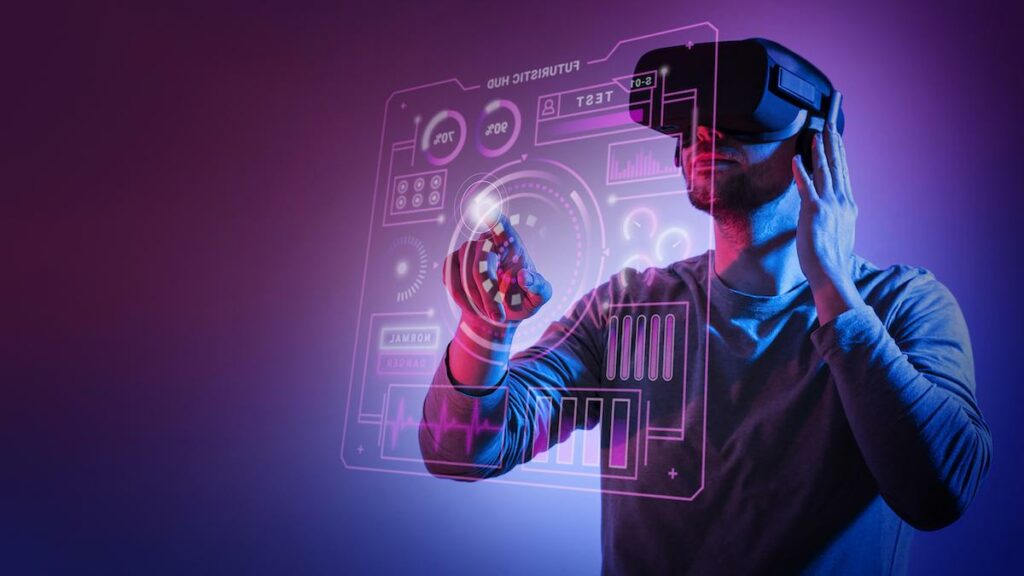The Influence of Technology on American Education: Boon or Bane

Technology has profoundly impacted various aspects of life, including education. The integration of digital tools and resources has transformed how students learn and educators teach, creating new opportunities and challenges. This blog will explore the influence of technology on American education, highlighting key advancements, benefits, and potential drawbacks.
Advancements in Educational Technology
1. Digital Classrooms: The advent of digital classrooms has revolutionized traditional learning environments. Tools like Google Classroom, Microsoft Teams, and Canvas allow teachers to manage assignments, share resources, and communicate with students online.
2. Online Learning Platforms: Platforms like Khan Academy, Coursera, and EdX provide access to a vast array of online courses, enabling students to learn at their own pace and from anywhere. These platforms offer courses ranging from elementary education to advanced professional development.
3. Interactive Learning Tools: Educational technology includes interactive tools such as smartboards, virtual reality (VR), and augmented reality (AR). These tools make learning more engaging and immersive, allowing students to explore complex concepts in a hands-on manner.
4. Artificial Intelligence (AI): AI is being used to personalize learning experiences. Adaptive learning systems analyze student performance and provide customized resources and feedback to address individual learning needs. Examples include platforms like DreamBox and Knewton.
Benefits of Technology in Education
1. Enhanced Accessibility: Technology has made education more accessible to a broader audience. Online learning platforms and digital resources enable students in remote or underserved areas to access quality education.
2. Flexible Learning: Technology allows for flexible learning schedules. Students can access course materials and complete assignments at their own pace, accommodating different learning styles and life commitments.
3. Increased Engagement: Interactive and multimedia tools make learning more engaging. Gamification, VR, and AR can capture students’ attention and make complex subjects more understandable and enjoyable.
4. Collaboration and Communication: Digital tools facilitate collaboration and communication among students and teachers. Platforms like Zoom and Slack enable real-time discussions, group projects, and peer-to-peer learning, fostering a collaborative learning environment.
5. Data-Driven Insights: Educational technology provides valuable data on student performance and learning patterns. Educators can use this data to identify areas of improvement, tailor instruction, and track progress over time.
Potential Drawbacks of Technology in Education
1. Digital Divide: Despite the benefits, there is a digital divide that can exacerbate educational inequalities. Students from low-income families or rural areas may lack access to necessary devices and high-speed internet, limiting their ability to benefit from technological advancements.
2. Overreliance on Technology: Excessive reliance on technology can lead to reduced face-to-face interaction and the development of essential social skills. It’s important to balance digital and traditional learning methods to ensure well-rounded education.
3. Privacy and Security Concerns: The use of digital platforms in education raises concerns about data privacy and security. Student data must be protected from unauthorized access and cyber threats. Educators and administrators need to implement robust cybersecurity measures and educate students on safe online practices.
4. Screen Time and Health Issues: Increased screen time can lead to health issues such as eye strain, poor posture, and reduced physical activity. It’s crucial to encourage regular breaks, physical exercise, and proper ergonomics to mitigate these effects.
5. Teacher Training and Adaptation: Integrating technology into education requires teachers to be adequately trained in using digital tools. Some educators may face challenges in adapting to new technologies, and continuous professional development is essential to ensure effective implementation.
Examples of Successful Technology Integration
1. Flipped Classrooms: In a flipped classroom model, students watch pre-recorded lectures at home and engage in interactive activities in class. This approach allows for deeper exploration of topics and personalized support from teachers. Schools like Clintondale High School in Michigan have successfully implemented this model.
2. Virtual and Augmented Reality: Schools and universities are using VR and AR to create immersive learning experiences. For example, the University of Illinois at Urbana-Champaign uses VR to simulate engineering experiments, providing hands-on learning opportunities without physical constraints.
3. AI-Powered Tutoring: AI-powered tutoring systems like Carnegie Learning provide personalized tutoring and practice sessions based on individual student performance. These systems adapt to each student’s learning pace and provide targeted feedback to improve understanding.
4. Online Collaboration Projects: Students engage in online collaboration projects with peers from different parts of the world, fostering global awareness and cross-cultural communication. Platforms like ePals and Global SchoolNet facilitate these international collaborations.
5. Gamification in Education: Gamification incorporates game elements into learning to increase motivation and engagement. Schools use platforms like Classcraft and Kahoot! to create interactive quizzes and challenges that make learning fun and competitive.
Future Trends in Educational Technology
1. Blockchain for Credentials: Blockchain technology can provide secure and verifiable digital credentials, making it easier for students to share their academic achievements with employers and institutions. This technology ensures the authenticity and transparency of educational records.
2. Virtual Learning Environments: As virtual reality technology advances, virtual learning environments (VLEs) will become more sophisticated, offering immersive and interactive educational experiences. VLEs can simulate real-world scenarios for subjects like medicine, engineering, and environmental science.
3. AI and Machine Learning: AI and machine learning will continue to evolve, offering more advanced personalized learning experiences. These technologies can identify learning gaps, predict student performance, and provide tailored resources to improve outcomes.
4. Microlearning and Bite-Sized Content: Microlearning involves delivering educational content in small, manageable segments. This approach aligns with the increasing preference for on-demand learning and can be particularly effective for busy professionals and lifelong learners.
5. Augmented Reality in Textbooks: Augmented reality will enhance traditional textbooks by overlaying digital information, videos, and interactive elements. AR-enabled textbooks provide a dynamic and engaging way to explore complex subjects.
Conclusion
The influence of technology on American education is undeniable, offering numerous benefits and opportunities for innovation. While there are challenges to address, such as the digital divide and privacy concerns, the potential for enhancing accessibility, engagement, and personalized learning is immense. By thoughtfully integrating technology into education, we can create a more inclusive, flexible, and effective learning environment that prepares students for the future. As technology continues to evolve, the education system must adapt to leverage these advancements and ensure that every student has the opportunity to succeed.









